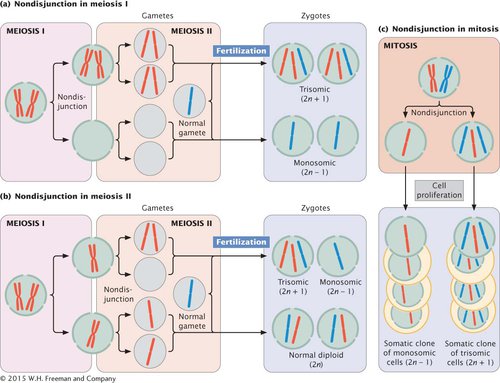6.3 Aneuploidy Is an Increase or Decrease in the Number of Individual Chromosomes
In addition to chromosome rearrangements, chromosome mutations include changes in the number of chromosomes. Variations in chromosome number can be classified into two basic types: aneuploidy, which is a change in the number of individual chromosomes, and polyploidy, which is an increase in the number of chromosome sets.
Aneuploidy can arise in several ways. First, a chromosome may be lost in the course of mitosis or meiosis if, for example, its centromere is deleted. Loss of the centromere prevents the spindle microtubules from attaching, so the chromosome fails to move to the spindle pole and does not become incorporated into a nucleus after cell division. Second, the small chromosome generated by a Robertsonian translocation may be lost in mitosis or meiosis. Third, aneuploidy may arise through nondisjunction, the failure of homologous chromosomes or sister chromatids to separate in meiosis or mitosis. Nondisjunction leads to some gametes or cells that contain an extra chromosome and other gametes or cells that are missing a chromosome (Figure 6.18).  TRY PROBLEM 21
TRY PROBLEM 21
